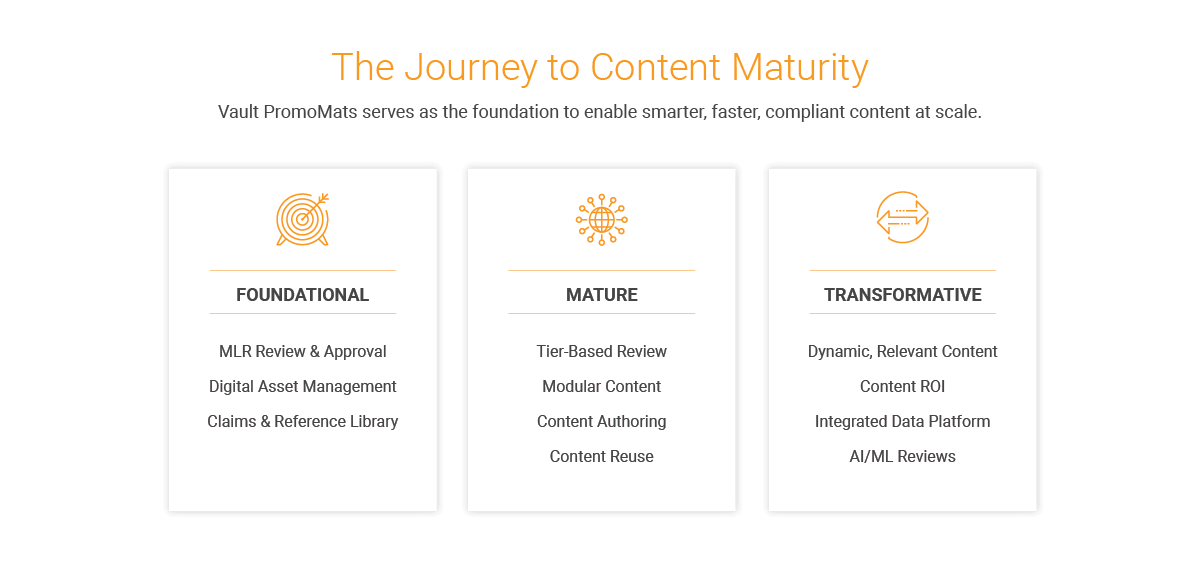Blog
How to Get Started with Digital Asset Management (DAM)
Aug 28, 2023 | Lizzy Ross
Aug 28, 2023 | Lizzy Ross
The life sciences industry is entering a digital renaissance. Organizations are learning to make use of their digital content investments as effectively as companies in less regulated industries.
Digital innovation has also sparked new ways of developing promotional materials, like modular content (small content components that can combine in different ways to form new collateral). This strategy makes it easier for companies to produce and reuse content faster. And, with more control over promotional materials, marketing and commercial operations teams can better protect their content investments.
But implementing a digital content strategy requires more than a shift in the types of assets your team creates – you will also need to invest in processes, people, and technology, such as a system for digital asset management (DAM).
Launching DAM — and outlining processes to govern it — can feel overwhelming, which is understandable. Rethinking your business processes and turning on new technology involves many moving parts.
If you’re uncertain how best to proceed, consider focusing on three general concepts:
- Know that DAM exists on a spectrum
- Choose the right goals at the right time
- Get comfortable with imperfection
Many companies feel as though DAM needs to be an all-or-nothing project. But just as no two organizations are the same, there’s no rigid path to implementing DAM.
Think about a realistic starting point based on your company’s needs, resources, and business objectives – it’s OK to start simple and build from there.
One advantage of Veeva Vault PromoMats is that basic DAM capabilities come out of the box. For example, users can upload any file type to Vault PromoMats without additional configuration. Knowing which features your DAM solution provides will help you figure out how to structure your launch plan and priorities.
Most companies implement DAM in order to reuse content across tactics, brand teams, and affiliates. But it may take some time for your team to get up and running with content reuse. And, if you’re part of a smaller organization, you might not need to share content globally.
While reuse is a great long-term objective, you can achieve success in other areas more quickly. Most brand teams will switch agencies at some point. Oftentimes, they’re left paying these agencies to retrieve digital assets that they already paid for. If you store these assets within your DAM system, you can protect your investment and eliminate the financial burden of switching agencies.
Many of us are hardwired to believe that we need to outline all project details before we can move forward. But there’s a difference between being diligent and expecting perfection.
After helping our various DAM customers launch and scale their programs, we’ve learned that roadblocks inevitably occur. Optimizing a DAM will take time. What’s important is taking the first step and ensuring you have a process for managing changes.
DAM supports marketing innovation
Understanding your DAM plan of action is a great first step toward achieving your company’s objectives. While it used to be something biopharma considered nice to have, it’s increasingly becoming more critical as a foundation for larger strategies like modular content. At Veeva, we have developed a simplified view to demonstrate where other customers are focusing today. If you desire to one day deliver more relevant content to patients and HCPs, DAM is a worthwhile early step.
